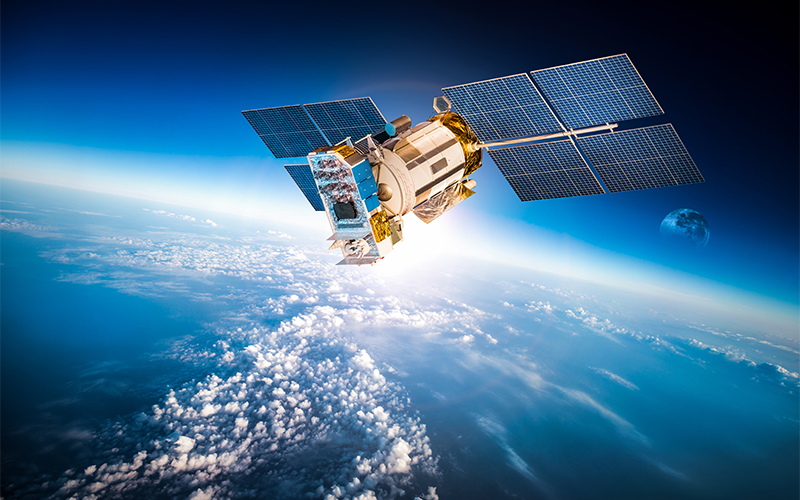Geospatial Data Services
Incorporating machine learning with GIS
The process of reproducing spatial information to depict physical features of a region of the earth is as old as humankind. The earliest maps, in the form of cave paintings and engraved clay tablets, date back to thousands of years. The methods of creating maps have advanced with technology, and the advent of computers in the late 20th century led to the birth of geographic information systems (GIS). Today, one of the latest innovations and automation avenues in spatial data analysis is the incorporation of AI/ML in GIS.
What is GIS?
GIS is not a new science. It is more than three decades old; however, there have been massive changes in leveraging the technology and incorporating modern GIS. By definition, GIS is a digital mapping system that combines information from various sources to provide us with new ways to record and study our environment. GIS data finds several applications, including urban planning, agriculture, disaster management, defence activities, forest management, and engineering planning.
With modern methods of collecting spatial data, including satellite imaging and aircraft and drones equipped with remote sensing equipment, GIS integrates and overlays information about a region’s topography, waterways, buildings, vegetation, roadways, infrastructure, and more. This information is then compiled and presented in a handy visual format to give detailed insights into the world around us.
As available computing power and data storage capabilities evolve, we can now efficiently collect and analyse large amounts of data from multiple sources and use AI/ML for geospatial data to create accurate and information-dense GIS to help solve real-world problems.
AI/ML and GIS
The sheer amount of raw geospatial data being collected by various remote sensing systems and different types of survey (drones/LiDAR) today makes it impossible for humans to analyse it efficiently. And the advent of eliminating human loop process enables AI/ML to build the training data to annotate and labelling of the data and this has significance impact on geospatial data. Let’s take a close look at some of the applications of ML algorithms in the analysis of GIS data.
- Image classification and labelling: Once an ML algorithm has absorbed enough training data sets to independently identify physical features from satellite or aerial images, the system rapidly identifies and categorises details that human researchers tend to miss. With proper training through large datasets and application of annotation techniques, these algorithms can swiftly identify features/objects such as cities, roads, wetlands, vegetation, artificial structures, traffic, pedestrian activity, telecom/utility inventories, and more. By cross-referencing specific features with their locations, we can automate infrastructure planning and mapping processes, detect patterns and anomalies, and predict pedestrian and traffic movement. ML algorithms can help in automating extraction as well as accurately classify land cover or extract road networks and other infrastructure from satellite imagery without human intervention.
- Image segmentation and clustering: With the ability to absorb and analyse a wide variety of data, machine-learning algorithms can segment unlabelled data based on specific characteristics and locations. This helps in creating interactive maps that indicate a particular region’s leading health issues, socioeconomic characteristics, environmental issues, and more.
- Simulation-based predictions: With massive amounts of historical and training data to fall back on, modern ML algorithms can analyse spatial patterns, detect various minutiae, and deliver accurate predictions. These systems can run multiple simulations. They create projections based on minor variances of several contributing factors. The projections provide data-driven insights into the future outcomes of actions taken today.
Based on the above points, it is clear that applying AI/ML in GIS and remote sensing of spatial data is expanding the scope of cartography to include various new-age applications. From extracting road network data to creating digital maps and planning and managing pedestrian and traffic movements during public events to assessing the impact of changing weather conditions, natural disasters, or increasing population in a particular region, incorporating machine learning into GIS is clearly the way forward. As technology advances and we see more innovations in machine learning and remote sensing equipment, there will be several applications with GIS data in the near future.
For organisations on the digital transformation journey, agility is key in responding to a rapidly changing technology and business landscape. Now more than ever, it is crucial to deliver and exceed on organisational expectations with a robust digital mindset backed by innovation. Enabling businesses to sense, learn, respond, and evolve like a living organism, will be imperative for business excellence going forward. A comprehensive, yet modular suite of services is doing exactly that. Equipping organisations with intuitive decision-making automatically at scale, actionable insights based on real-time solutions, anytime/anywhere experience, and in-depth data visibility across functions leading to hyper-productivity, Live Enterprise is building connected organisations that are innovating collaboratively for the future.
How can Infosys BPM help?
Reach out to know more about how the Infosys BPM Geospatial Data Services can revolutionise how you collect, store, process, integrate, manage, analyse, and distribute map data.






